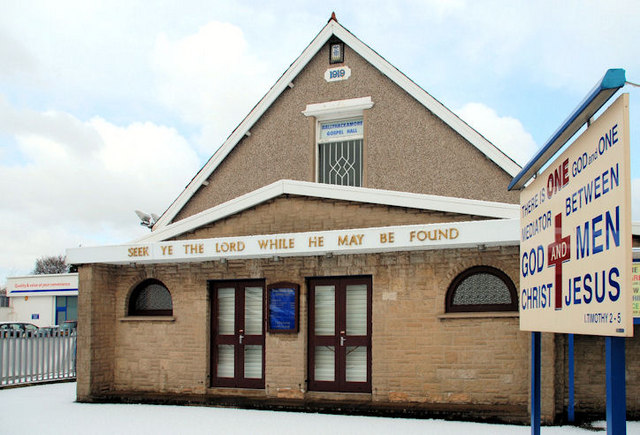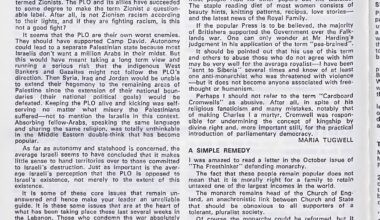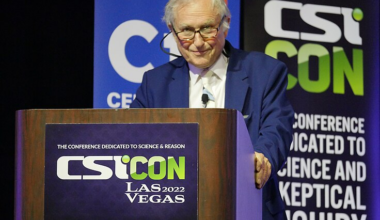
One morning I found myself at a bus stop in the suburbs of East Belfast, feeling rather disconcerted. Next to me on the bench was a small leaflet which announced the love of Jesus, secured by an irregularly shaped pebble. It had been left there by an elderly man, now quietly trudging away down the street. After leaving, I had spent over a decade living in Scotland, statistically the least religious part of the British Isles. I had recently arrived back to work on an LGBT history project and found myself having to readjust to life in Northern Ireland.
It is hard to ignore the presence of Christianity here. It ranges from small signals of everyday piety and confessional identities to the frequent presence of religious signs in political discourse. A browse through a recent edition of a local newspaper in County Down brought me to the ‘religious matters’ page. One of its features was a redemption narrative of female transgression which had been contributed by a local reader. The story told of the ‘sin’ of an unmarried woman in the city and her subsequent conversion and joyful reunion with her family in the countryside; the article would not have been out of place in the 1950s. Some of the most egregious voices in Christianity shout the loudest. It would be hard, for instance, to avoid the homophobic ravings of fundamentalist preachers in Belfast city centre on a Saturday afternoon. A plethora of churches dot their way across town and country; those belonging to fringe Protestant churches are amongst the most conspicuous.
Yet the results of the 2021 census show that secularisation is gathering pace. Most commentary thus far has focused upon a key demographic shift. Catholics now outnumber Protestants for the first time, a development with profound political implications for a statelet which was designed to deliver a permanent Protestant electoral majority. The increasing Catholic population does not translate in a surge of enthusiasm for the Catholic Church. As in the Republic of Ireland, it is indicative of an ethnic identity which is ever further divorced from religious adherence.
Commentators have given less attention to another feature of the census: the increasing number of people in Northern Ireland who state that they do not have a religion. When they were asked what ‘religion, denomination or body’ they belonged to, 330,983 people ticked ‘none’ in response, compared with 183,164 in 2011. This represents an 80 per cent increase in the number of the non-religious in the space of a decade. Furthermore, there has been an increase in the number of people who report that they were not raised in a religion. According to the census, the total number of those who stated their upbringing was not religious rose from 6,600 in 2001 to 28,500 in 2022. The non-religious now comprise 17.4 per cent of the total population.
Protestant decline
Commentary on the census by David Marshall, Director of Census and Population Statistics at the Northern Ireland Statistics and Research Agency, has emphasised that the changing religious demography of Northern Ireland has in part been driven by age structures. Analysis of the 2011 census demonstrated that the Catholic population was on average younger and that there was a higher number of births than deaths. The pattern was reversed for Protestants, with the overall Protestant population decreasing more rapidly than it was being renewed. The declining membership of the mainstream Protestant churches is therefore underpinned by an overall decrease in population for them to recruit from.
However, the census data for the decline of the major Protestant churches indicates a more complex story of secularisation and shifting political identities. Strikingly, the non-religious are now more numerous than adherents of the Presbyterian Church in Ireland. In the mid-twentieth century, membership of the Presbyterians surpassed that of any other Protestant church in Northern Ireland. In the early 2000s, the non-religious overtook the number of those who identified themselves with the Church of Ireland, an Anglican body which shares heritage and doctrine with the Church of England due to the legacy of English colonialism. The two major churches in Northern Ireland have experienced long-term decline since the 1960s. Back then, as the 2021 census again shows, the Presbyterian Church garnered the affections of around 30 per cent of the population and the Church of Ireland, 25 per cent. Only 11.5 per cent of the population now identify themselves with the Church of Ireland and 16.6 per cent with the Presbyterian Church in Ireland.
While it seems unlikely that all of those who say that they have ‘no religion’ were formerly associated with these two churches, it seems probable that the vast majority were. The decline of ‘national’ churches is a typical symptom of secularisation. These organisations once claimed the default adherence of large numbers of people, but as the social power of religion has diminished, the imperative has dwindled for individuals who are less religious to claim that they identify with a church.
Writing nearly twenty years ago, the sociologist John Brewer observed that the mainstream Protestant churches were suffering from declining participation and reductions in membership. Brewer concluded that patterns of personal religiosity were being affected by broader social changes, declining religious practice, liberalisation in beliefs and other attitudes and behaviour. Religion was retreating into the private sphere; yet nominal identification with Protestantism had remained high. To misquote Grace Davie, a sociologist of religion, this was ‘belonging without believing.’ Yet Brewer highlighted the defection and disenchantment of the youth, noting how the most popular affiliation amongst the young (aged 18-34) was ‘no religion.’ Since then, this trend has continued swiftly, and nominal identification is now eroding away. There has been some growth in the membership of minor Protestant churches and sects – often evangelical and fundamentalist – as well as a small increase in adherents of non-Christian religions. However, this is dwarfed by the decline of the major Protestant churches.
Secularisation and political change
The regional breakdown of the 2021 census results shows that some of the areas of Northern Ireland with the highest percentage of Protestants are also those with the highest percentage of the non-religious. The most irreligious area of the region is currently Ards and North Down, at 32.1 per cent, followed by Lisburn and Castlereagh at 25.3, Mid and East Antrim at 23.9 and Belfast at 23.8.
The secularisation of an ever-increasing proportion of the Protestant population has wrought changes to political as well as religious identities. As discussed in an article by Mary C. Murphy, the Alliance Party of Northern Ireland was formed in 1970. It aims to be a non-sectarian political grouping able to appeal to members of all communities. After failing to make a significant breakthrough for many years, it has grown apace in the last twenty. Alliance is a close relative of the Liberal Democrat Party. It combines economic centrism with an advocacy of socially liberal and reformist policies. Recent analysis by Christopher Raymond at Queen’s University Belfast shows a direct correlation between the growth of non-religion and electoral support for Alliance, with both increasing in tandem.
The rise of Alliance has been fuelled by younger and more middle-class ex-Protestant voters who are infuriated with the religiosity and social conservatism of the unionist parties – in particular, the Democratic Unionist Party (DUP). The 2022 Northern Ireland Assembly election saw Alliance making gains, notably in Upper Bann, a predominantly rural area previously considered unpromising territory. Here, a twenty-four-year-old councillor, Eóin Tennyson, became the first openly gay Member of the Legislative Assembly (MLA) to be elected.
The marked increase in the number of the non-religious, recorded in the 2021 Northern Ireland census, reveals the emergence of a more secular society. The growth of non-religion has largely been at the expense of the main Protestant churches; the ranks of the non-religious have now surpassed those of the Presbyterian church, formerly the largest such grouping. Many of the non-religious can be surmised to be younger and likely to adhere to a more socially liberal worldview. Consequently, the statistical rise of non-religion has been accompanied by the increasing electoral fortunes of the Alliance Party, who have successfully capitalised on a growing demographic of people who are alienated by the traditionalism and social conservatism of the two main unionist parties. It seems likely that, as secularisation continues to progress in years to come, support for a more secular and socially liberal politics will increase in tandem.
Enjoy this article? Subscribe to our free fortnightly newsletter for the latest updates on freethought.








1 comment
Excellent article, thanks
Your email address will not be published. Comments are subject to our Community Guidelines. Required fields are marked *
Donate